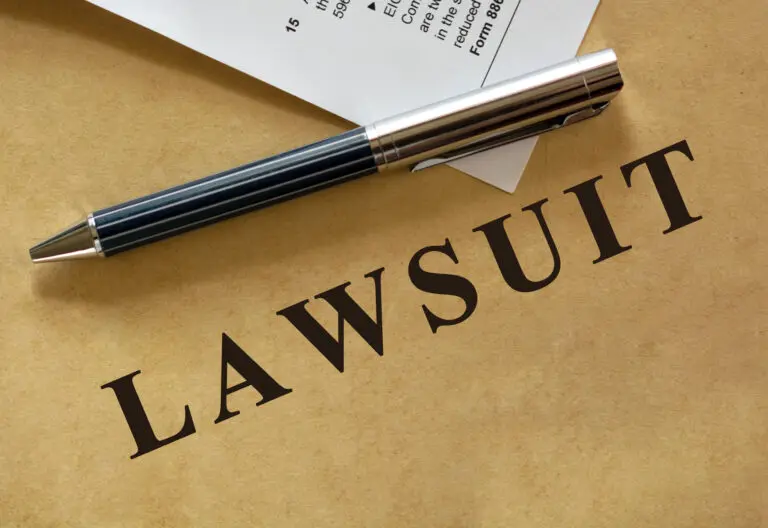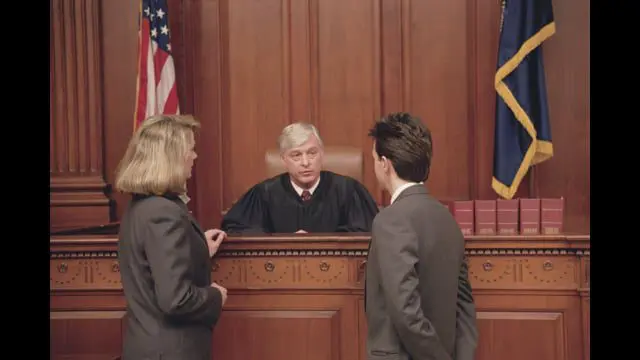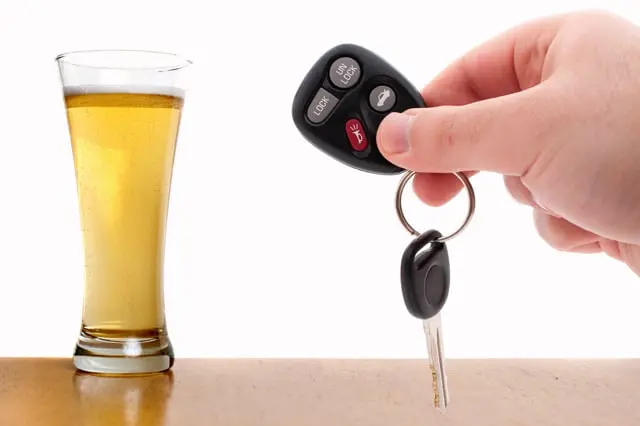Motor vehicle accidents can be complex, particularly when questions of fault arise. If you were involved in an accident and believe you may be partially at fault, you might wonder whether you can still claim compensation. The good news is that in many cases, you can. Understanding how fault is determined and how it affects your ability to seek compensation is crucial. In this article, we will explore the intricacies of claiming compensation when you are partially at fault and how a motor vehicle accident lawyer can assist you.
Understanding Comparative Fault in Motor Vehicle Accidents
In the context of motor vehicle accidents, fault is not always black and white. There are many situations where both parties involved in an accident share some level of responsibility. This concept is known as comparative fault o negligencia comparativa. Under comparative fault rules, your ability to claim compensation is determined by your degree of fault in the accident.
There are two main types of comparative fault systems used in the United States: pure comparative fault y modified comparative fault.
Pure Comparative Fault: In states that follow pure comparative fault rules, you can recover damages even if you are 99% at fault for the accident. However, your compensation will be reduced by your percentage of fault. For example, if you are awarded $100,000 in damages but are found to be 30% at fault, your compensation would be reduced to $70,000.
Modified Comparative Fault: In states that follow modified comparative fault rules, you can only recover damages if your fault is below a certain threshold, usually 50% or 51%. If you are found to be more at fault than this threshold, you are barred from recovering any damages. For instance, if you are 51% at fault in a state that follows the 51% rule, you would not be able to claim any compensation.
Understanding which system applies in your state is essential for determining your eligibility to claim compensation. A motor vehicle accident lawyer can help you navigate these complex rules and assess your potential recovery.
How Fault is Determined in Motor Vehicle Accidents
Determining fault in a motor vehicle accident is a critical step in the claims process. Fault is generally established based on evidence such as police reports, witness statements, normas de tráficoy physical evidence from the scene of the accident. Insurance companies and courts will evaluate this evidence to determine each party’s degree of fault.
Police Reports: After an accident, the police will often prepare a report that includes their findings on how the accident occurred and who may be at fault. While this report is not definitive, it can be a significant piece of evidence in establishing fault.
Witness Statements: Witnesses to the accident can provide valuable information that helps clarify how the accident happened and who was at fault. Their statements can corroborate your version of events and challenge the other party’s claims.
Traffic Laws: Violations of traffic laws, such as speeding, running a red light, or failing to yield, can be strong indicators of fault. If the other driver violated a traffic law, this could significantly bolster your case.
Physical Evidence: Skid marks, vehicle damage, and the positioning of the vehicles after the accident can provide important clues about how the accident occurred. Accident reconstruction experts can analyze this evidence to determine fault.
It’s important to note that fault can be shared. For example, you might have been speeding, but the other driver ran a red light. In such cases, both parties may share responsibility for the accident. A motor vehicle accident lawyer can help gather and present evidence to minimize your degree of fault and maximize your compensation.
The Impact of Partial Fault on Compensation
If you are found to be partially at fault for a motor vehicle accident, this will affect the amount of compensation you can recover. The degree of fault assigned to you will be used to reduce your compensation proportionally. For example, if you are 25% at fault and your total damages are $40,000, your compensation would be reduced by 25%, leaving you with $30,000.
This reduction in compensation is why it is so important to work with a motor vehicle accident lawyer who can help minimize your percentage of fault. Your lawyer will build a strong case by gathering evidence, consulting with experts, and negotiating with insurance companies to ensure that you receive the maximum compensación possible.
In addition to reducing your compensation, being partially at fault can also complicate the claims process. Insurance companies may try to use your fault as a reason to deny your claim or offer a low settlement. A skilled motor vehicle accident lawyer can counter these tactics and advocate on your behalf.
The Role of a Motor Vehicle Accident Lawyer in Partial Fault Cases
When you are partially at fault for a motor vehicle accident, having an experienced motor vehicle accident lawyer on your side is crucial. Your lawyer will play several key roles in your case, including:
- Investigating the Accident: Your lawyer will conduct a thorough investigation to gather evidence that supports your claim and challenges the other party’s allegations. This may include reviewing police reports, interviewing witnesses, and consulting with accident reconstruction experts.
- Negociar con las compañías de seguros: Insurance companies are notorious for trying to minimize payouts, especially in cases where fault is disputed. Your lawyer will handle all communications with the insurance companies, negotiate on your behalf, and work to secure a fair settlement.
- Construir un caso sólido: Your lawyer will build a compelling case that demonstrates why the other party was primarily at fault for the accident. This may involve presenting evidence of traffic law violations, expert testimony, and other supporting documentation.
- Advocating for Your Rights: If your case goes to court, your lawyer will represent you in litigation, arguing your case before a judge or jury. They will present evidence, cross-examine witnesses, and make legal arguments to protect your rights and secure compensation.
- Minimizing Your Fault: One of the primary goals of your lawyer will be to minimize the percentage of fault assigned to you. By effectively presenting evidence and challenging the other party’s claims, your lawyer can reduce your degree of fault and increase your compensation.
Common Scenarios Where Partial Fault May Apply
There are many scenarios in which a driver may be partially at fault for a motor vehicle accident. Understanding these scenarios can help you anticipate potential challenges in your case and prepare accordingly.
Rear-End Collisions: In a rear-end collision, the driver who rear-ends another vehicle is typically presumed to be at fault. However, if the lead vehicle suddenly stopped or had malfunctioning brake lights, the driver who was rear-ended may share some fault.
Intersection Accidents: Accidents at intersections often involve disputes over who had the right of way. If both drivers failed to yield or if one driver ran a red light while the other was speeding, both may share fault.
Lane Change Accidents: When a driver changes lanes without signaling or checks their blind spot, they may be at fault for an accident. However, if the other driver was speeding or driving aggressively, fault may be shared.
Multi-Vehicle Accidents: In accidents involving multiple vehicles, fault can be spread among several drivers. For example, if one driver was speeding, another was tailgating, and a third failed to brake in time, all could be partially at fault.
Pedestrian Accidents: If a pedestrian is struck by a vehicle while jaywalking, both the pedestrian and the driver may share fault. The driver’s fault may be reduced if the pedestrian was crossing outside of a designated crosswalk.
In each of these scenarios, a motor vehicle accident lawyer can help you navigate the complexities of shared fault and work to maximize your compensation.
The Legal Process for Claiming Compensation When Partially at Fault
The process for claiming compensation when you are partially at fault for a motor vehicle accident involves several steps. Understanding these steps can help you prepare for what to expect and ensure that you take the necessary actions to protect your rights.
- Initial Consultation with a Lawyer: Your first step should be to consult with a motor vehicle accident lawyer. During this consultation, your lawyer will review the details of your case, explain your legal options, and discuss how fault may impact your claim.
- Investigation and Evidence Gathering: Your lawyer will conduct a thorough investigation to gather evidence that supports your claim and minimizes your degree of fault. This may involve obtaining police reports, interviewing witnesses, and consulting with experts.
- Filing a Claim: Once your lawyer has gathered sufficient evidence, they will file a claim with the relevant insurance companies. This claim will outline the damages you are seeking and provide evidence to support your case.
- Negotiation with Insurance Companies: After your claim is filed, the insurance companies will investigate the accident and may attempt to negotiate a settlement. Your lawyer will handle these negotiations, advocating for a fair settlement that reflects your damages and your reduced degree of fault.
- Litigation (If Necessary): If a fair settlement cannot be reached, your lawyer may recommend taking your case to court. During litigation, your lawyer will present your case before a judge or jury, arguing for compensation that accounts for your reduced degree of fault.
- Settlement or Judgment: The final step in the process is reaching a settlement or receiving a judgment. If your case settles, you will receive compensation based on the agreed-upon terms. If your case goes to trial, the judge or jury will determine the amount of compensation you are entitled to receive.
Throughout this process, your motor vehicle accident lawyer will provide guidance, support, and legal representation, ensuring that your rights are protected and that you receive the compensation you deserve.
Trending Legal Topics in Motor Vehicle Accident Cases
As the legal landscape continues to evolve, there are several emerging trends in motor vehicle accident cases that are relevant to claims involving partial fault.
Distracted Driving: One of the most significant trends in recent years is the rise of distracted driving as a leading cause of motor vehicle accidents. With the increasing use of smartphones and in-car technology, more drivers are becoming distracted behind the wheel. In cases where both drivers were distracted, fault may be shared, complicating the claims process.
Ride-Sharing Accidents: As ride-sharing services like Uber and Lyft have become more popular, there has been a corresponding increase in accidents involving these vehicles. Determining fault in ride-sharing accidents can be complex, as it may involve multiple parties, including the ride-sharing company, the driver, and other motorists. A motor vehicle accident lawyer can help navigate these complexities and ensure that all liable parties are held accountable.
Autonomous Vehicles: The advent of autonomous vehicles presents new challenges for determining fault in motor vehicle accidents. If an autonomous vehicle is involved in an accident, questions of liability may arise, particularly if the vehicle’s technology is found to be at fault. This emerging area of law requires specialized knowledge, and working with a lawyer who is up-to-date on these developments is essential.
Litigios sobre seguros: As insurance companies continue to tighten their policies, disputes over coverage and compensation are becoming more common. In cases where fault is disputed, insurance companies may try to deny coverage or offer low settlements. A motor vehicle accident lawyer can advocate on your behalf and ensure that your rights are protected.
Litigation Trends: The increasing use of technology in the courtroom, such as video evidence and accident reconstruction software, is changing the way motor vehicle accident cases are litigated. Lawyers who are skilled in leveraging these technologies can present more compelling cases and achieve better outcomes for their clients.
Staying informed about these trends can help you anticipate potential challenges in your case and ensure that you are prepared to address them with the help of your motor vehicle accident lawyer.
Conclusion: Protecting Your Rights and Seeking Compensation
Being partially at fault for a motor vehicle accident does not necessarily bar you from claiming compensación. By understanding the principles of comparative fault, working with a skilled motor vehicle accident lawyer, and staying informed about emerging legal trends, you can protect your rights and maximize your recovery.
Throughout the process, your lawyer will be your advocate, guiding you through each step and fighting for the compensation you deserve. Whether through negotiation, litigation, or settlement, your lawyer will work tirelessly to ensure that you are fairly compensated for your injuries, damages, and losses.
If you are involved in a motor vehicle accident and believe you may be partially at fault, don’t hesitate to seek legal advice. Contact a motor vehicle accident lawyer today to discuss your case, explore your options, and take the first step toward securing the compensation you deserve.
Attorneys.Media Video Document References
- Is Personal Injury Part of Your Law Practice?
- As an Attorney, How Are You Generating Content for Your Online Presence?
- How Can You Help Potential New Clients Get Their Questions Answered?
- How Do You Differentiate Yourself When Someone Looks Online for Help?
- How Do You Differentiate Yourself as a Criminal Defense Attorney?
- Have You Been Thinking About Video Marketing for Your Law Firm?
- Should Attorneys Use Video Marketing to Attract New Clients?
- What Do Potential Clients See When They Research Your Name Online?
- Cómo puede ayudarle Attorneys.Media









